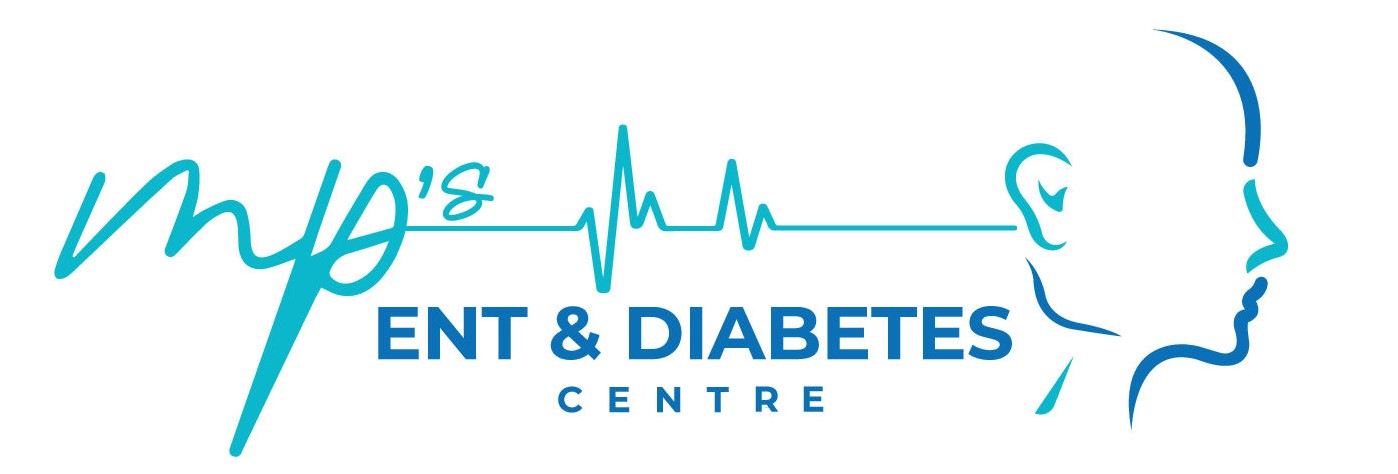Services > Sinusitis Diagnosis & Treatment
Sinusitis Diagnosis & Treatment
💡 1. What is Sinusitis?
Sinusitis is the inflammation of the sinus cavities, which are air-filled spaces located behind the forehead, cheeks, and nose.
- It can be caused by infections (viral, bacterial, or fungal), allergies, or structural issues.
- Sinusitis can be acute (short-term) or chronic (lasting more than 12 weeks).
🔥 2. Types of Sinusitis
✅ Acute Sinusitis:
- Lasts for less than 4 weeks.
- Often caused by viral or bacterial infections.
- Symptoms improve within 7–10 days.
✅ Subacute Sinusitis:
- Lasts between 4–12 weeks.
- Symptoms are less severe but longer-lasting.
✅ Chronic Sinusitis:
- Lasts for more than 12 weeks.
- Caused by persistent infections, allergies, or nasal polyps.
- Requires more intensive treatment.
✅ Recurrent Sinusitis:
- Four or more episodes of sinusitis in a year.
- Each episode lasts at least 7 days.
🔎 3. Symptoms of Sinusitis
- Nasal congestion or blockage
- Facial pain or pressure (around the eyes, forehead, or cheeks)
- Post-nasal drip (mucus draining down the throat)
- Thick yellow or green nasal discharge
- Headache or sinus tenderness
- Fever (in bacterial sinusitis)
- Bad breath (halitosis)
- Fatigue or general malaise
- Cough or throat irritation (worse at night)
- Reduced or lost sense of smell
🔥 4. Risk Factors for Sinusitis
- Upper respiratory infections (colds)
- Allergic rhinitis or seasonal allergies
- Deviated nasal septum
- Nasal polyps
- Smoking or exposure to irritants
- Weakened immune system
- Frequent air travel (barotrauma from pressure changes)
🔍 5. Sinusitis Diagnosis
Your healthcare provider will diagnose sinusitis based on:
✅ A) Medical History & Physical Exam:
- Symptoms, duration, and triggers.
- Facial tenderness when pressing on the sinuses.
- Nasal endoscopy:
- Uses a thin, flexible tube with a camera to view the sinuses.
- Detects polyps, inflammation, or drainage.
✅ B) Imaging Tests:
- X-ray or CT scan:
- Provides detailed images of the sinuses.
- Identifies blockages, polyps, or structural issues.
- MRI (Magnetic Resonance Imaging):
- Used in complex cases or if a tumor is suspected.
✅ C) Nasal Culture or Biopsy:
- Rarely used but may help identify the bacteria or fungi causing chronic sinusitis.
✅ D) Allergy Testing:
- Identifies allergens contributing to chronic sinusitis.
⚡ 6. Sinusitis Treatment Options
🔥 A) Acute Sinusitis Treatment
Most cases of acute sinusitis are viral and resolve with supportive care.
✅ Home Remedies & Self-Care:
- Saline nasal rinses: Clears mucus and reduces inflammation.
- Steam inhalation: Helps loosen mucus and relieves congestion.
- Hydration: Drink plenty of fluids to thin mucus.
- Rest and recovery: Helps the immune system fight the infection.
- Over-the-counter pain relievers:
- Acetaminophen or ibuprofen for pain and fever.
✅ Medications:
- Decongestants (e.g., oxymetazoline or pseudoephedrine):
- Reduces swelling but should not be used for more than 3 days.
- Nasal corticosteroids (e.g., fluticasone, mometasone):
- Reduces inflammation.
- Antihistamines (for allergic sinusitis):
- Reduces allergy symptoms.
- Antibiotics:
- Only prescribed if symptoms persist beyond 10 days or worsen (bacterial sinusitis).
- Amoxicillin-clavulanate is commonly used.
- Alternatives: Doxycycline or fluoroquinolones for penicillin-allergic patients.
⚡ B) Chronic Sinusitis Treatment
Chronic sinusitis may require long-term management and more aggressive therapy.
✅ Medications:
- Nasal corticosteroids:
- Reduces inflammation and prevents recurrence.
- Saline nasal irrigation:
- Performed regularly to flush out mucus and irritants.
- Antibiotics:
- Long-term low-dose antibiotics may be prescribed for bacterial infections.
- Leukotriene modifiers:
- Used for sinusitis linked to allergies or asthma.
✅ Procedures for Chronic Sinusitis:
- Balloon Sinuplasty:
- A minimally invasive procedure.
- A balloon is inserted into the sinus and inflated to widen the sinus opening.
- Endoscopic Sinus Surgery (ESS):
- For chronic or recurrent sinusitis unresponsive to medication.
- Removes polyps, scar tissue, or blockages.
- Improves sinus drainage.
- Functional Endoscopic Sinus Surgery (FESS):
- A more extensive version of ESS for complex cases.
✅ Allergy Treatment:
- Allergy shots (immunotherapy):
- For chronic sinusitis caused by allergic triggers.
- Antihistamines and allergy medications:
- To manage allergy-induced sinus inflammation.
🔥 7. Home Remedies & Lifestyle Tips
- Steam inhalation:
- Helps loosen mucus and reduces nasal congestion.
- Hydrate frequently:
- Drink plenty of water to thin mucus.
- Use a humidifier:
- Keeps the air moist and reduces sinus dryness.
- Avoid allergens or irritants:
- Reduce exposure to dust, pollen, or smoke.
- Apply warm compresses:
- Soothes facial pain and promotes drainage.
⚡ 8. Potential Complications of Untreated Sinusitis
If left untreated, sinusitis can lead to:
- Chronic sinus inflammation: Persistent symptoms and ongoing congestion.
- Sinus abscess: Pus collection that may require drainage.
- Orbital cellulitis: Infection spreading to the eye socket, causing swelling and vision problems.
- Meningitis: Infection spreading to the brain lining (rare but serious).
- Permanent loss of smell: Due to chronic inflammation.
- Asthma flare-ups: Worsening of asthma symptoms in individuals with chronic sinusitis.
✅ 9. Prevention Tips
- Avoid allergens and triggers:
- Use air purifiers and avoid smoke exposure.
- Practice good hygiene:
- Wash hands frequently to prevent infections.
- Use nasal rinses regularly:
- Helps clear irritants and reduces inflammation.
- Manage allergies:
- Take prescribed allergy medications or undergo immunotherapy.
- Stay hydrated:
- Drink fluids to keep nasal passages moist.
- Quit smoking:
- Reduces the risk of chronic sinusitis.
🔎 10. When to See a Doctor
Seek medical attention if you experience:
- Symptoms lasting more than 10 days without improvement.
- Severe facial pain or swelling.
- High fever or persistent headache.
- Vision changes or eye pain.
- Frequent sinus infections.
- Bloody nasal discharge.
